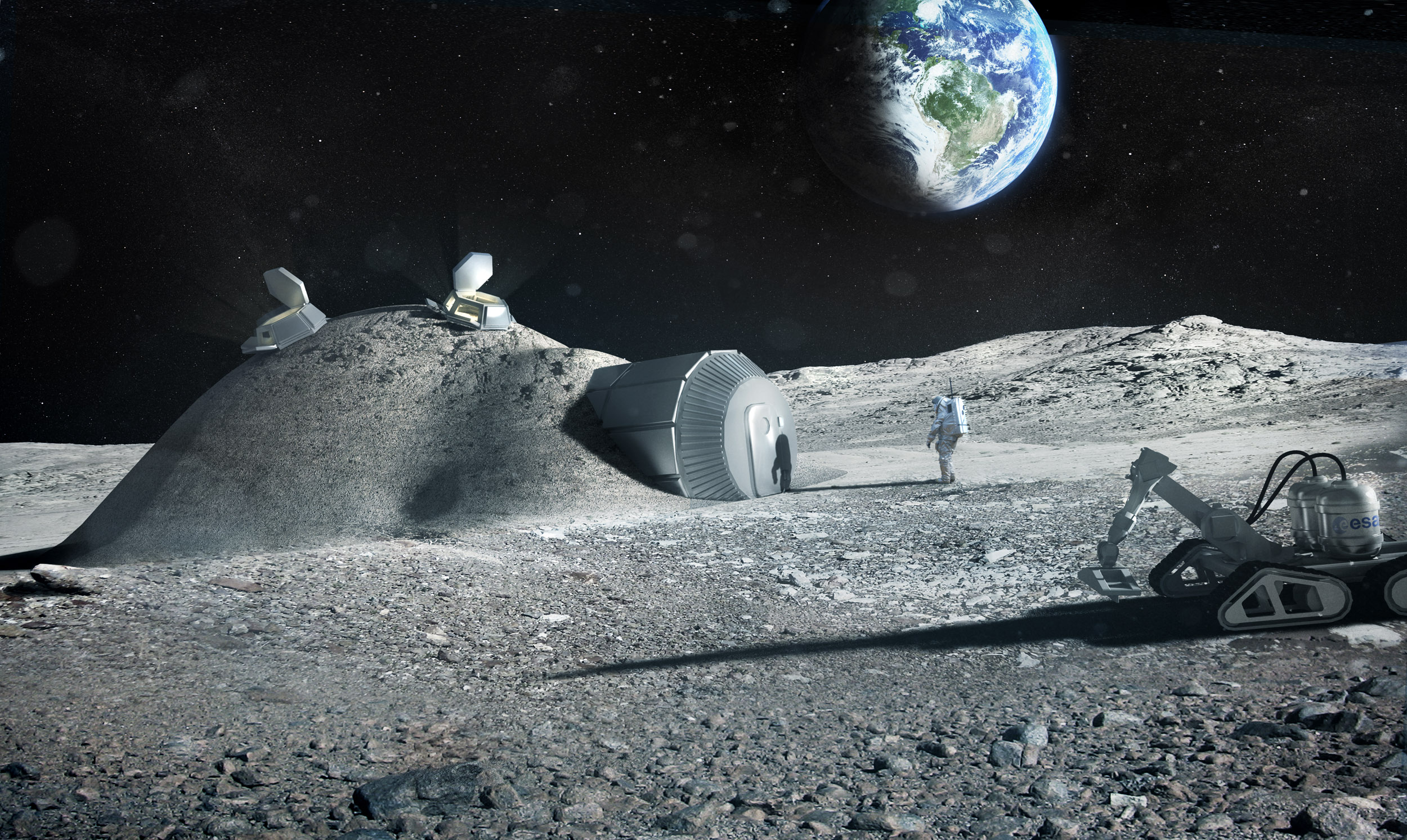
Advertisement
Newt Gingrich’s promise to build a manned moon base by 2020 was met with disbelieving stares during the last presidential election. Comparable remarks made by the European Space Agency’s (ESA) new boss, Jan Woerner, have provoked similar responses.(1)
Hopes for a manned moon base equipped with robots and people are batted as just another crazy idea at this point. However, the proposal has come up in various discussions lately as Europe’s commitment to fund the International Space Station (ISS) comes to a potential close in 2020.(2)
In theory, the lunar base could be used to mine for resources and serve as a pit stop for manned missions to Mars. “It’s not to build some small houses over there and then to have a city hall and a church and whatever,” said Woerner, who took over the ESA last July.(2)
Moon Village — the successor of the ISS?
“The Moon Village would have multiple uses and multiple users,” he told sources in Paris.(2)
“Maybe one country is more interested in science, another may be a private company interested in mining… and another may be interested to use the Moon as a stepping stone for further exploration,” he explained.(2)
“This is the overall scheme, and we are now discussing of course worldwide whether there is enough interest in that to go ahead with it,” said Woerner. The orbiting space station is an international project made possible with the cooperation of Europe, Canada, the United States, Russia and Japan.(2)
All member countries have promised to fund the International Space Station (ISS) until 2024, except the European Union (EU) whose commitment is only until 2020. Woerner noted, however, that the ISS “had its value,” and hoped the EU would continue to involve itself in the project.

Although the idea is still at its preliminary stage at this point, the picture has already been sketched in Woerner’s mind: “I see the Moon Village as the ideal successor of the International Space Station for… exploration,” he said. And unlike the ISS, a manned moon village would not require a formal decision among countries.
“It is more an understanding of many nations to go together to the moon,” he added.(2)
However, there are multiple questions and issues that must first be resolved before a manned moon station can get off the ground and into space. This includes finding the best location for the site. Once a spot is chosen, individual countries and space agencies could then decide on how they want to contribute to the project.
Woerner speculated Russia would be one of the first countries to jump aboard the lunar settlement bandwagon. “Russia has some lunar missions planned, so why not have them as part of the Moon Village?’ questioned Woerner, adding that “the Chinese are planning some lunar missions.”(2)
An out of this world proposal
He also said he doesn’t mind hearing people call his ideas crazy. “The word ‘crazy’ is exactly something I would like,” he said. “We have to think out of the box. That means new ideas.”
Woerner said the idea for a manned moon mission first occurred to him at two space conferences in the US and Israel last year. He claims several organizations have already expressed interest and approached him about how they could participate. Furthermore, the thought of a manned moon base is surely bound to arise in the minds of space agencies in the US, Japan, Canada and Russia, as they discuss the future of the ISS.
“And we will have discussions with other countries and states worldwide,” said Woerner. “We need an idea of where to go and what to do.”
Earlier this month, the ESA suggested using 3D printing technology to design a set of permanent structures out of lunar soil, also known as lunar regolith, which could be used to shelter astronauts by 2030. The ESA appears to be taking the lead role in promoting a lunar base ever since NASA announced its disinterest in leading future manned missions to the moon.(2)
The moral of the story? If you want to go to the moon, your ideas must almost always be out of this world.
Sources include:
(1) Space.com
(2) DailyMail.co.uk
Submit a correction >>
This article may contain statements that reflect the opinion of the author
Advertisement
Advertisements















